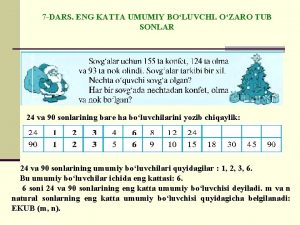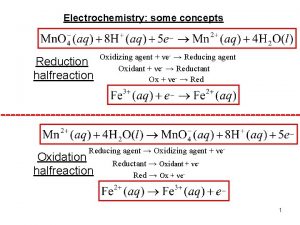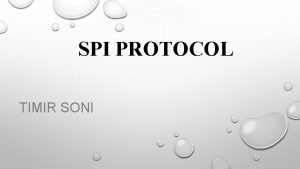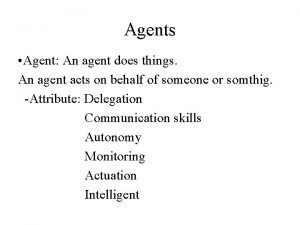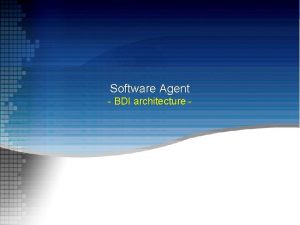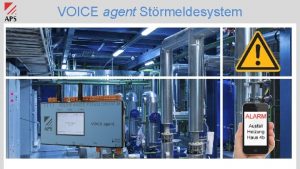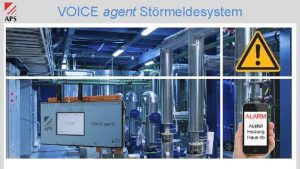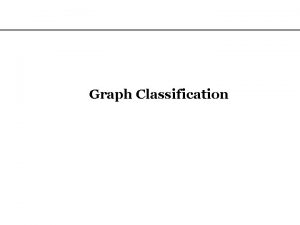ACTIVEPASSIVE AGENT TIMIR SONI AGENDA Introduction Agent Classification













- Slides: 13

ACTIVE-PASSIVE AGENT TIMIR SONI

AGENDA Introduction Agent Classification Agent Configuration Active/Passive Selection Agent Configuration with example Active/Passive Agent Application and Usage 2

Introduction • UVM test-bench consist of static as well as dynamic components. • UVM Architecture contains an important physical component that is called AGENT. • Agent Verification component dedicated for specific logic interface to dut • An Agent fundamentally contains the Driver, Sequencer & a Monitor. Note : Agent is not restricted to contain only driver/sequencer/monitor. 3

4

Agent Classification • An agent is classified as : - Active Agent - contains all the components responsible for generating stimulus driving to dut - Passive Agent - contains only component responsible for sampling signals from dut. 5

Agent Configuration • The structure of an Agent is dependent on its configuration • Configuration can differ from one test to the another using a different configuration object for the same Agent • An agent can be configured as Active or Passive Agent. • In ACTIVE mode, Driver, Sequencer and Monitor are constructed, yet in PASSIVE mode neither Driver nor Sequencer is constructed. Usually in PASSIVE mode, a Monitor is constructed. 6

• Functional coverage related to the Agent’s functionality, there may be a functional coverage monitor implemented as a sub-component of Agent or may not depending on the Testbench Architecture. • Behavior is controlled using a bit type variable named “has_functional_coverage” present inside agent config. • Configuration object also plays a significant role in defining other features of the Agent & how an Agent behaves or configured with respect to certain test-case/scenario generation. 7

Active/Passive Selection • Selection between ACTIVE or PASSIVE mode of an agent can be done by a through enum type uvm_active_passive_enum. • typedef enum bit { UVM_PASSIVE=0, UVM_ACTIVE=1 } uvm_active_passive_enum • Default value of mentioned enum is UVM_ACTIVE. • An agent can be also configured as ACTIVE/PASSIVE by using a set config method, the default agent will be ACTIVE. the set config can be done in the env or test. • set_config_int("path_to_agent", "is_active", UVM_ACTIVE); • set_config_int("path_to_agent", "is_active", UVM_PASSIVE); 8

Agent Configuration with example 9

10

Active/Passive Agent Application and Usage • Passive agent - Merging ip/block verification environment to the SOC environment. (Note : As at SOC level each IP is a black box and is considered as a golden block) - reduces the verification effort at SOC level - Traffic on an internal interface of the DUT (where the master and slave roles are both performed by RTL components) - Only instantiate the monitor and used for checking and coverage only - Useful when there's no data item to be driven to DUT - Various SOC challenges can be overcome by passive monitor. 11

• Active agent - Monitor used to sample the response and accordingly drive the sequence - Enables data to be driven to DUT via driver - Collect bus or signal information through a virtual interface - Collected data may or may not be used for protocol checking but can be used for coverage - Collected data is exported via an analysis port 12

13
 Agenda sistemica y agenda institucional
Agenda sistemica y agenda institucional Dunyodagi tillar soni
Dunyodagi tillar soni Qon ivimasligi
Qon ivimasligi Mexanizmlarning erkinlik darajasini aniqlash
Mexanizmlarning erkinlik darajasini aniqlash Kapilyarlik
Kapilyarlik Relationship by blood
Relationship by blood Tub bo'luvchilar soni
Tub bo'luvchilar soni Scilympiad soni
Scilympiad soni Bul funksiyalari soni
Bul funksiyalari soni Pi omikron
Pi omikron Kedar soni
Kedar soni Parajiya pattni
Parajiya pattni What does an oxidizing agent do
What does an oxidizing agent do Table of standard electrode potential
Table of standard electrode potential






